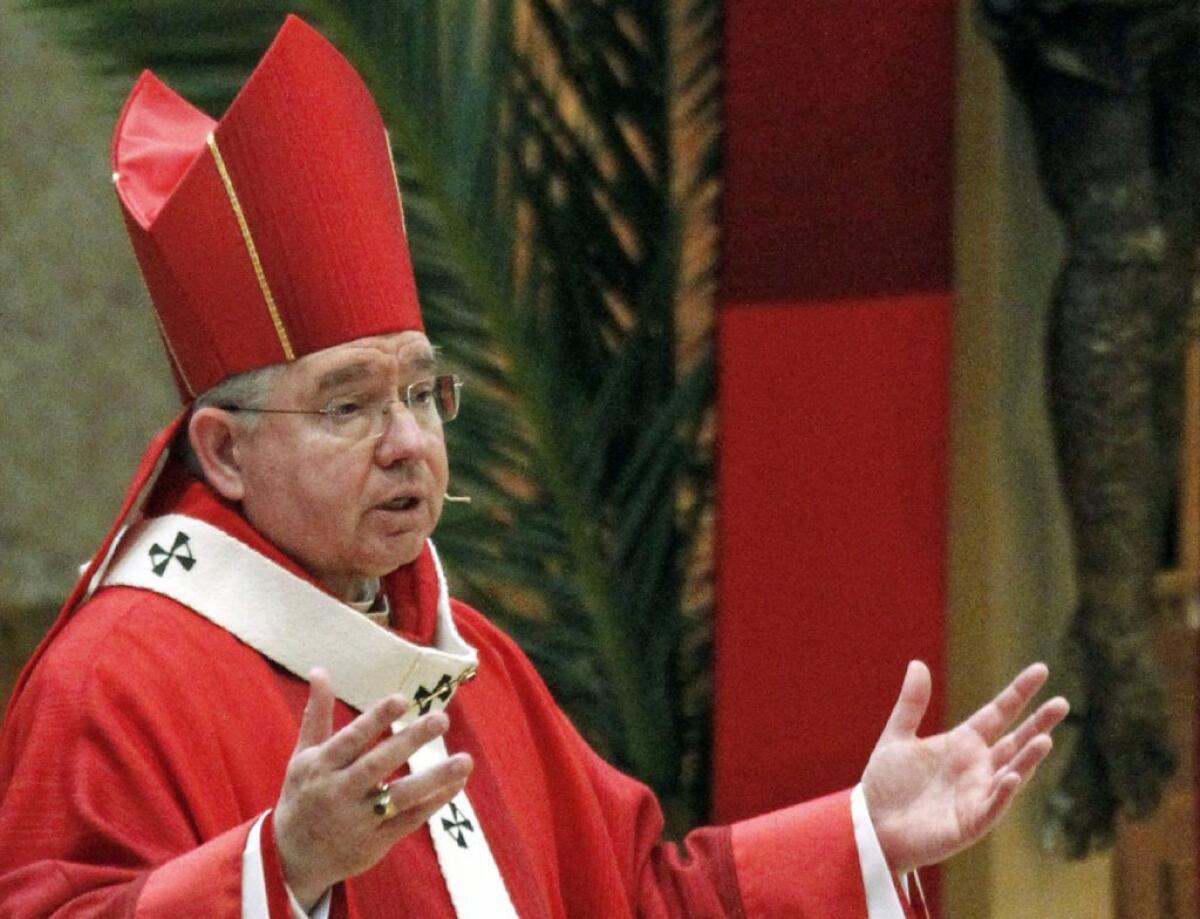Opinion: Why L.A.’s archbishop might have been passed over for a cardinal’s hat

- Share via
After it was announced on Sunday that Pope Francis has included Washington, D.C.’s Archbishop Wilton Gregory among a group of new cardinals, one of the first to offer congratulations was Archbishop Jose Gomez of Los Angeles.
Gomez, who is also the president of the U.S. Conference of Catholic Bishops, said that in bestowing a red hat on Gregory, who will be the first African American cardinal, the pope was sending “a powerful message of hope and inclusion to the Church in the United States,”
A similar message of inclusion might have been sent if the pope had also made a cardinal of Gomez, an immigrant from Mexico who presides over an archdiocese with a large Latino presence.
But Gomez has been passed over by Francis not just this year but in four previous announcements of new cardinals since Gomez’s immediate predecessor, Cardinal Roger Mahony, turned 80 and became ineligible to vote in papal elections.
Catholic Angelenos would be right in thinking that this is a significant omission. Before Mahony, two other Los Angeles archbishops had been cardinals: James McIntyre and Timothy Manning.
It’s tempting to jump to the conclusion that Gomez, who belonged to the Opus Dei movement, lacks a cardinal’s hat because he’s more conservative than Francis (as are many U.S. bishops). It’s notable that Charles Chaput, the former archbishop of Philadelphia and a favorite of conservative Catholics, retired in January without a cardinal’s hat, despite a long history of cardinals in that city.
But Prof. Kathleen Sprows Cummings, the director of the Cushwa Center for the Study of American Catholicism at the University of Notre Dame, questioned the idea that Francis meant to slight Gomez or Chaput. More important than theological differences, she suggested, was the pope’s conception of a “global church.”
“The church in the U.S. is not his most important priority,” Cummings said of Francis, Indeed, the pope has elevated prelates in what might be called the periphery of the church to the College of Cardinals while sometimes ignoring archbishops who in past papacies would have expected to receive a cardinal’s hat because of the importance of their dioceses. (Among the cardinals named on Sunday were prelates from Brunei and Rwanda.)
Cummings did say that the appointment of Gregory, an African American who has criticized President Trump, was a recognition that the pope “does pay attention to what’s happening” in the United States.
Gregory was most recently in the national news in June when he objected to Trump’s visit to a shrine to Pope John Paul II in Washington, D.C., the day after demonstrators were cleared from a square to facilitate the president’s visit to St. John’s Episcopal Church. Gregory said at the time that he found it “baffling and reprehensible that any Catholic facility would allow itself to be so egregiously misused and manipulated in a fashion that violates our religious principles, which call us to defend the rights of all people, even those with whom we might disagree.”
Gregory will be 73 in December, only two years shy of the retirement age for bishops (though Francis is free to decline resignations proffered by bishops when they turn 75.) Gomez also has a birthday in December, but he’ll be only 69. So a cardinal’s hat for him — and Los Angeles — may lie in the future.
More to Read
A cure for the common opinion
Get thought-provoking perspectives with our weekly newsletter.
You may occasionally receive promotional content from the Los Angeles Times.











